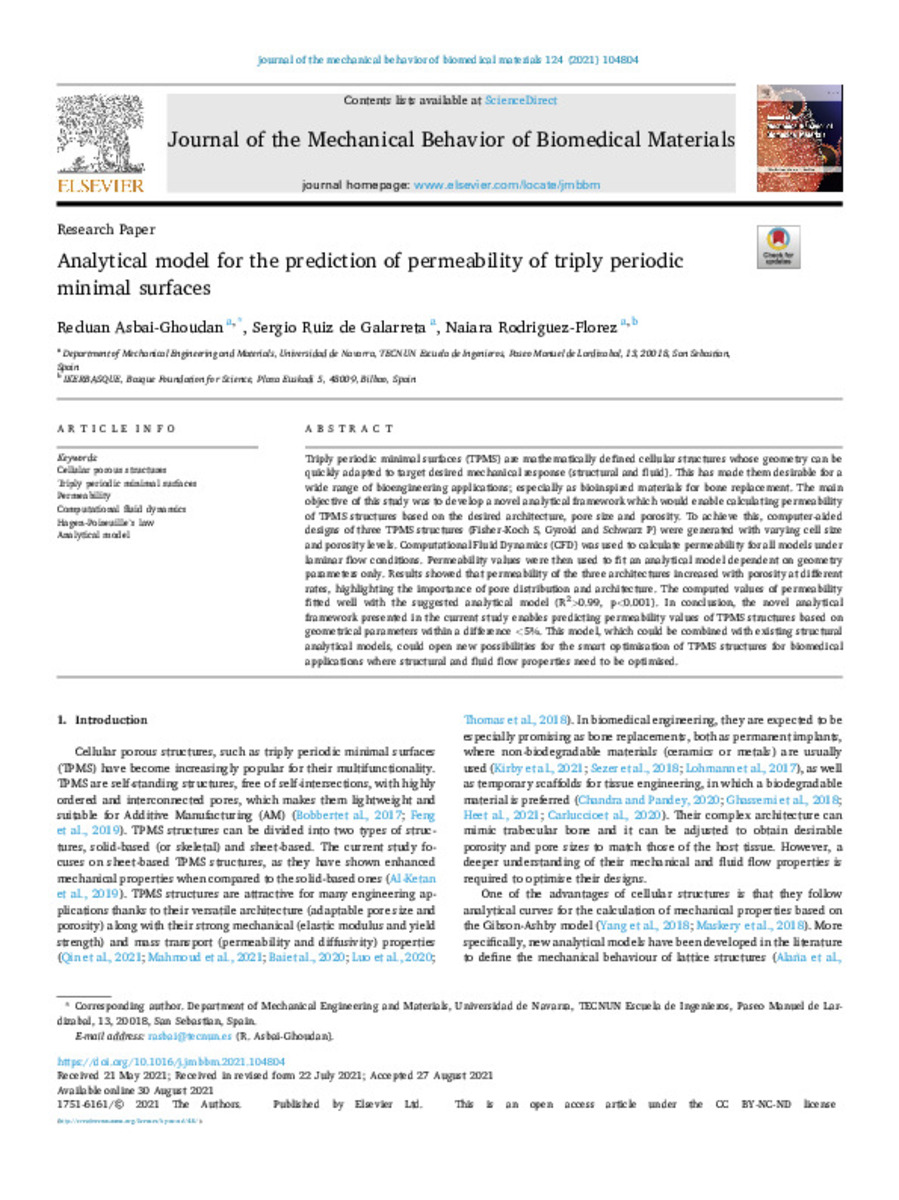Analytical model for the prediction of permeability of triply periodic minimal surfaces
Palabras clave :
Cellular porous structures
Triply periodic minimal surfaces
Permeability
Computational fluid dynamics
Hagen-Poiseuille's law
Analytical model
Fecha de publicación :
2021
Nota:
This is an open access article under the CC BY-NC-ND license
Cita:
Asbai-Ghoudan, R. (Reduan); Ruiz de Galarreta-Moriones, S.(Sergio); Rodriguez-Florez, N. (Naiara). "Analytical model for the prediction of permeability of triply periodic minimal surfaces". Journal of the Mechanical Behavior of Biomedical Materials. 124 (104804), 2021,
Aparece en las colecciones:
Estadísticas e impacto
0 citas en

0 citas en

Los ítems de Dadun están protegidos por copyright, con todos los derechos reservados, a menos que se indique lo contrario.







